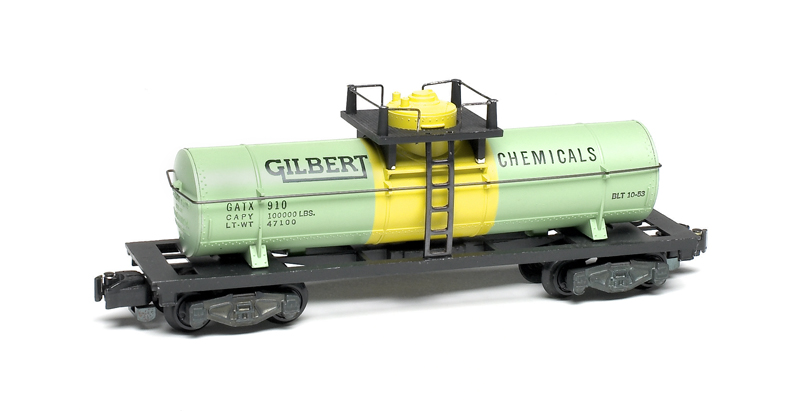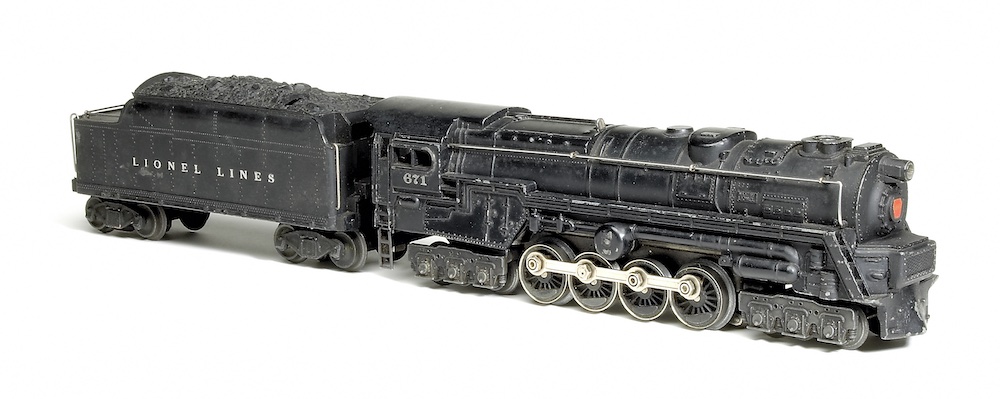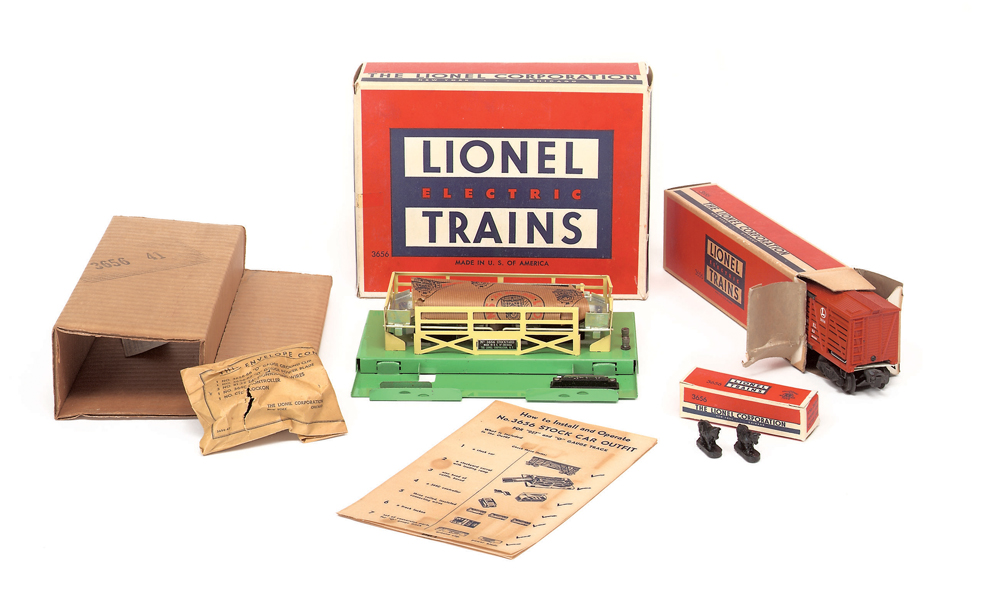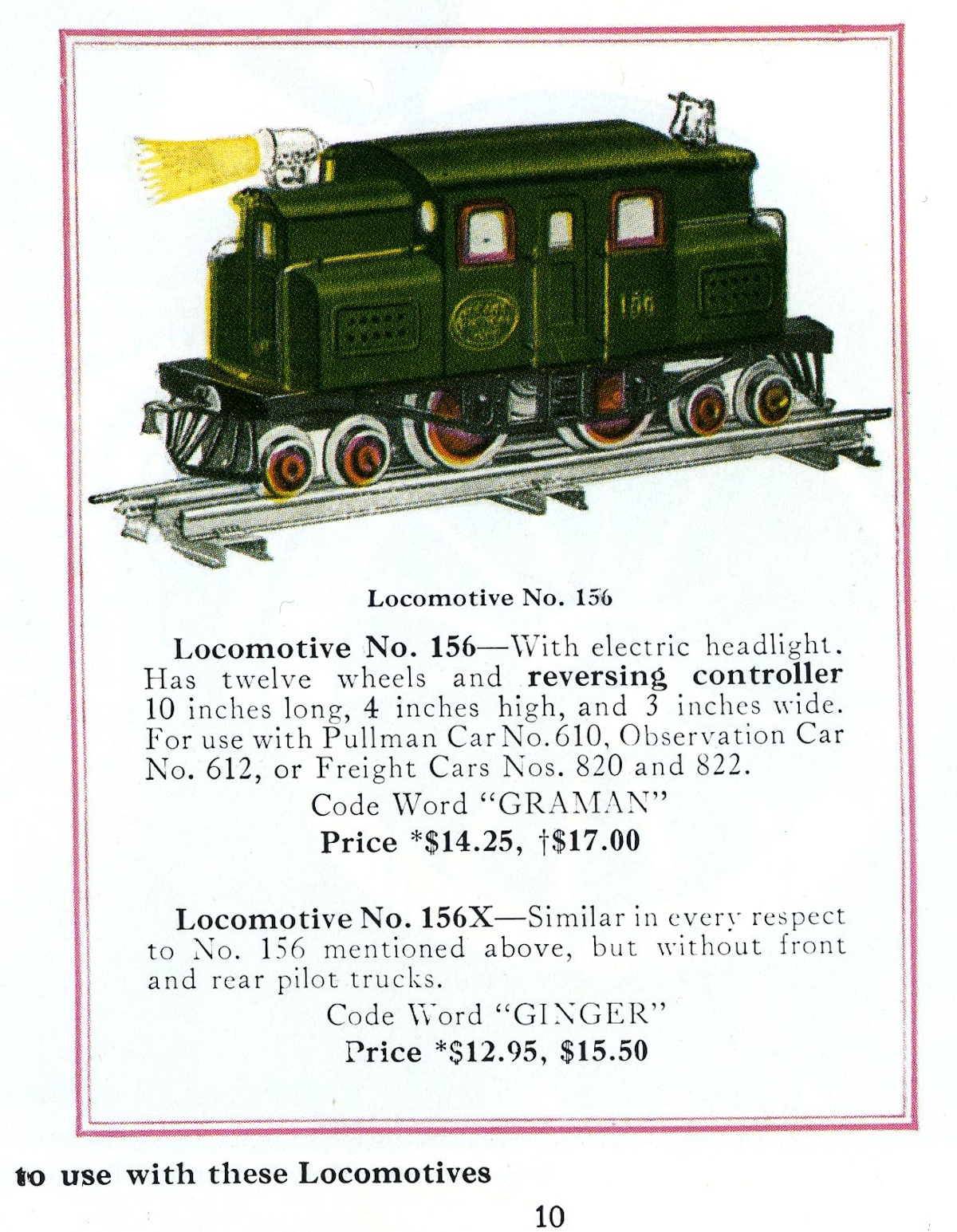Despite the lack of play value in tank cars, boys wanted them because they reflected what kids saw in full-sized trains. So prewar manufacturers like Lionel and Ives developed tank cars, but hoped to do more with them.
The breakthrough came in 1932, when Lionel worked out a licensing agreement with Sun Oil Co. Tank cars that advertised the name of a petroleum refiner or another business could earn needed revenue for toy train firms.
From then on, with the exception of a year prior to World War II, all of Lionel’s O gauge tank cars came decorated for the name and herald of Sunoco. This trend picked up speed after World War II. Single-, double-, and even triple-dome cars, all lettered for Sunoco, ruled the three rails from 1945 through 1955.
Something new in S gauge
The A.C. Gilbert Co., Lionel’s principal rival in the postwar era, upped the ante in 1954 with something brand new in its American Flyer line. Until then, it had been content to offer only S gauge single-dome oil tankers decorated for Shell and Gulf. Then Gilbert introduced the first of what it called a “chemical tank car.”

The no. 910, decorated for Gilbert Chemicals, boasted a black platform around its dome, and long ladders reached from the black-painted metal frame up to the platform. Otherwise, this 7 5/8-inch-long model might be mistaken for a typical tanker. But these details were enough to suggest to Flyer enthusiasts that the tank car carried chemicals and not petroleum products.
Plans change for Gilbert
The impetus for producing a chemical tank car came from Maurice Romer, the head of toy train development at Gilbert during much of the postwar period. According to an interview with Romer found in the book A.C. Gilbert’s Heritage (1983), he had seen a full-sized tanker painted and lettered for the Celanese Corp., a producer of chemicals based in New York City. He thought a model would be ideal for the Flyer line.
Romer obtained a color photo and painting diagram from Celanese and set out to have tank cars made. At a meeting of company executives, Guy Schumacher, who administered the Gilbert factory, asked whether Celanese was paying for the model. He must have been familiar with the arrangement Lionel and others had made with Sun, Shell, and others.
When Romer answered that Celanese was paying “Absolutely nothing” for the car, Schumacher countered that it should be lettered for Gilbert Chemicals to promote the firm. Others agreed, so the 910 came painted in warm shades of green and yellow (the Celanese scheme) but with Gilbert graphics.
Oddly enough, Gilbert offered this attractive chemical tank car for just one year. The 910 was available only for separate sale; not even the top freight set for 1954 included it. Perhaps the change in the name printed on the car occurred too late in the production year for it to be advertised as part of a cataloged set.
Gilbert cataloged the No. 910 Gilbert Chemicals tank car in 1954 only.
Buyer’s Checklist:
- Broken or cracked plastic shell?
- Scratched or faded paint or lettering?
- Damaged or missing ladders and handrail?
- Functioning coil knuckle couplers?
- Original platform?













